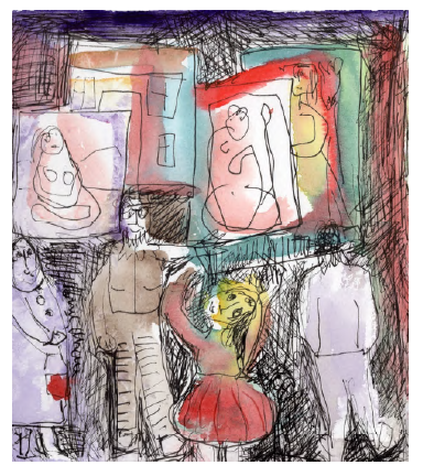2. Modigliani's Jest
Angély enters the art historical literature via the meandering, alcohol‐fueled path of Amedeo Modigliani, the “Prince of Bohemians.” In Charles Douglas’ 1941 text, Artist Quarter: Modigliani, Montmartre and Montparnasse, the author writes that Modigliani once joked with the poet and journalist Louis Latourette: “Now I’ve only got one buyer and he’s blind!” However, according to Paul Alexandre, “In reality these words were spoken by Henri Doucet, whose principal buyer around 1912 was an exceptionally myopic German art lover.” Douglas continues:
|
This seemingly bitter joke was true. The buyer was one Père Angély, known on the Butte as Léon, a bald, fat little fellow who lived in an attic on the rue Gabrielle. He was a retired solicitor’s clerk, myopic, who had collected pictures for years for such scanty prices as his small means afforded, and continued to do so on principle even when almost totally blind, in the hope of one day holding a sale by which he would realize enough to provide a comfortable income for his old age. But he had to sell his collection of prospective “masters” for almost as little as he had given for them. The war intervened before his “stable” had acquired fame, and he died in 1921 as poor as Cousin Pons. [A reference to Balzac’s Le Cousin Pons, from Comédie humaine.] Still, he outlived Modigliani. He was on the make, if you like, yet he had been a Good Samaritan to artists in their misery…” (Douglas 1941)
|
As we shall see while exploring the scant literature available on Angély…the authors fail to mention a crucial protagonist: a girl who described the artwork to Angély, thus helping to augment his physical and intuitive “vision.”

